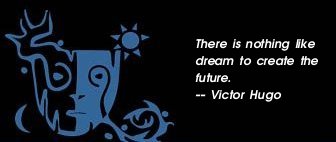|

"What is Your Intent?"
by Jerry Wennstrom
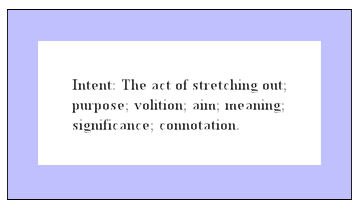 Every thought and every action has an energetic effect on the world. We are surrounded by a stirring pot of collective consciousness, and it can manifest in the physical world in any way possible — negatively and positively. We can create war and destruction, and we can create harmony and beauty. Becoming aware and receptive to the creative powers in which we are immersed — consciously applying the attention of this awareness in ways that resonate with our deepest and most noble longing — is the task of being human. Reality is being created in every moment. What ultimately comes into form in the world is our responsibility, both individually and collectively. We think and live fear and we get a frightening creation. We think and feel love, even if it is the love of quiet, solitude and non-action, and we create beauty in the world. Every thought and every action has an energetic effect on the world. We are surrounded by a stirring pot of collective consciousness, and it can manifest in the physical world in any way possible — negatively and positively. We can create war and destruction, and we can create harmony and beauty. Becoming aware and receptive to the creative powers in which we are immersed — consciously applying the attention of this awareness in ways that resonate with our deepest and most noble longing — is the task of being human. Reality is being created in every moment. What ultimately comes into form in the world is our responsibility, both individually and collectively. We think and live fear and we get a frightening creation. We think and feel love, even if it is the love of quiet, solitude and non-action, and we create beauty in the world.
The most creative and energetically pleasant environment to be in is one that is the product of conscious awareness. What is it about an old cathedral or museum that, upon entering, we experience something beyond the obvious beauty of the place? They are environments where awareness and deliberate beauty have been cultivated and time has added the element of formless integrity. Don Juan, the Yaqui shaman with whom Carlos Castaneda apprenticed, spoke about places in our environment where people naturally stopped to rest. He said most people are unaware as to why they stop at certain places. However, he says they do so because they are places of power that hold a more conscious focus of energy.
Second in power to deliberate, conscious creation is the product of innocent creation — that which has evolved naturally without the attention of ego or an excess of desired outcome. The innocent environment holds a sense of the sacred, even if it was not the original intent. The small town or village that evolved slowly from an innocent sense of service and community has a different feel than even the most beautiful shopping mall with its esthetics strategically manipulated to increase commerce rather than to celebrate an organic sense of harmony. Similarly, some assess the value of a virgin forest by its "real" estate market value or by the board foot value of its trees. The natural harmony the forest has come to express is neither valued nor considered an asset. When we enter a pristine forest we feel differently than we do when entering an even well-kept public park. If we are paying attention, we may find ourselves called to reverent attention by the natural harmony the virgin forest reflects back to us.
In a similar way, people who compulsively fill space have a different feel than people who consciously or unconsciously allow space. Of course it is important to cultivate and find balance in the refinement of both. However, many people tend not to value unexploited space and see it as too little or, worse, nothing without their active involvement in making it into their own image. Lao Tsu says, "Better too little than too much." Most Europeans would agree we Americans, generally speaking, veer on the side of "too much".
I have a too little friend I like to visit on occasion because of the innocently unconscious space he creates. He is not a terribly aware person, his home is not particularly beautiful, his aesthetic considerations are minimal, yet people drop by often because the space that he does not fill is easy and pleasant for others to be in. There are other people I know who, even though their environment fits the magazine-perfect image of a contemporary fashionable home, create environments that are difficult to be in. Some spaces are filled with compulsive, mindless activity, possessiveness or an excessive focus on material things. The intent expressed in someone's environment can act as a buffered place for him or her to unconsciously hide and avoid the possibility of real intimacy. Such an environment can inadvertently contribute to a person's sense of isolation.
I was in a house in an upscale, suburban neighborhood that was so completely "perfect" that I found it unattractive. It was an ideal environment that came out of a magazine and the woman who created the environment appeared to be as bored with it as I was. I said to my wife, "This house needs a few junk cars parked in the yard to make it more interesting." I had to eat my words however. I spotted one old photo on the wall that changed my perspective. It was of a Japanese military officer in full regalia Ô sword and all. Seeing the picture saved the day for me. It was a portal into something more real and human. This incongruous photo of a Japanese military man amidst the other desperately cute elements of décor somehow offered something more human and alive. For me, it became the way into the reality of the people who inhabited the home. I saw in their attempt and in their eyes that these people wanted and needed to connect with others. When I asked about the photograph the woman came alive. I was told it was a distant relative and the conversation took off from there and got progressively more personal and real.
 After deeply connecting with the woman I had to suspend my unfair judgment. However, I could not help myself — we are all influenced by the conscious or unconscious intent of an environment. It is difficult for any of us not to feel what we feel when immersed in the insistent demands of intent. And perhaps that's the point— we are all affected by the soul or lack of soul of the expression of one's environment! If our conscious or unconscious intent is to express nothing about ourselves, take no risks, create a rehashed magazine's picture of reality, then what we end up with is the emptiness of that expression. After deeply connecting with the woman I had to suspend my unfair judgment. However, I could not help myself — we are all influenced by the conscious or unconscious intent of an environment. It is difficult for any of us not to feel what we feel when immersed in the insistent demands of intent. And perhaps that's the point— we are all affected by the soul or lack of soul of the expression of one's environment! If our conscious or unconscious intent is to express nothing about ourselves, take no risks, create a rehashed magazine's picture of reality, then what we end up with is the emptiness of that expression.
There are traditions that cultivate the fine points of intention. Ceremonialists of many traditions are ritually able to call in the mystery of conscious intent and set in motion a higher vibration that blesses both the environment and those who enter. At the time my wife and I were married, she was involved in a Tibetan Buddhist sangha (community). As a wedding gift I built her a 40-foot meditation tower where she could do her daily practice. It happened that a group of Tibetan Buddhist Monks from the Drepung-Loseling monastery were visiting Whidbey Island just after I completed the tower. I asked the head monk if he and his monks would bless my tower. Being the sweet, spontaneous and generous people the Tibetans are, particularly Tibetan monks, they were happy to oblige.
To conduct the blessing, all nine monks piled into the small, 8 X 8-foot space of the tower. They asked questions about Marilyn's practice to know how to conduct the ritual and which deities to call in. They then proceeded to create a 45-minute ritual blessing, replete with incense, drumming and the wonderful, guttural, overtone chanting the Tibetan monks do. Afterwards, the tower seemed to glow in the dark with the beauty of their conscious, focused intent! Their blessing had a visceral effect, and the many people who come and visit the tower nearly always comment on the power and beauty of the place. Conscious intent and the power of our actions translate through everything we do. To cultivate this awareness and go about our daily tasks more mindfully blesses and awakens matter at every level.
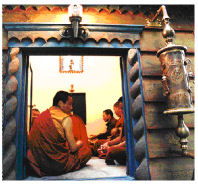
Tibetan Monks Blessing the Tower
There are stories of Indian guru Meher Baba turning over enormous pots of food at celebratory ritual gatherings in India where he and his followers feed the poor because those preparing the food had not done so with mindful, reverent attention. He saw this offering as a service to God and believed that the food he gave to the poor was to be prepared as if it were for God. Here too — a person sensitive to the subtle energy of human interaction recognized the difference between mindless activity and conscious intent. Even grandma understood the law of proper food preparation when she made that mysterious pot of chicken soup that actually made us feel better when we were sick!
There is meaning and purpose to the level of energy exchange that goes on at all levels. A proper balance is brought about by the exchange of energies in various forms. Alone, no one can hold and interpret all of the energies and influences that run through the collective of our lives. It is especially difficult for those who do not cultivate awareness. Without awareness we tend to take the burden of things we abstractly feel and experience personally. We all do this to some extent.
There is actually a funny Hindu story on the subject. A guru is quietly meditating with several of his followers when he breaks the silence and says, "Who is it that is so sad?" Someone from the group responded, "What do you mean?" The guru said, "Well someone in the room is sad and I know it's not me!"
I believe we help each other carry the weight of our collective burden through the osmosis of energies that are exchanged in our daily human interactions. In our common phrasing we describe the exchange in many ways — "cry on your shoulder," "a listening ear," "unburden your mind," etc. If we don't allow and direct this exchange consciously, then somehow it blows through our lives and affects us at an unconscious level.
Jungian analyst and author, Marion Woodman, tells a wonderful story that shows someone with an awareness of conscious intent and how this awareness helped her when she was on the brink of death in India:
-
-
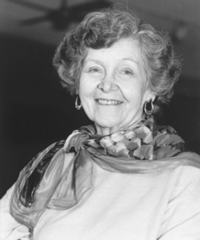 When I was in India I had all the time in the world, but I got dysentery. I tell you it's a terrible disease. I used to go down to the hotel foyer because I thought I had to get comfortable at least. I went down to the foyer and I sat on the couch and wrote a letter to my husband. A large, very dark woman came and squeezed between me and the end of the couch. She didn't speak a word of English. And I thought, What is she doing? I'm right handed and she gets where I can't even write my letter. But she had a warm arm. And I thought, Gee, that's so good. It's warm. She kept pushing this arm against me. We ended up at the other end of the couch. When I was in India I had all the time in the world, but I got dysentery. I tell you it's a terrible disease. I used to go down to the hotel foyer because I thought I had to get comfortable at least. I went down to the foyer and I sat on the couch and wrote a letter to my husband. A large, very dark woman came and squeezed between me and the end of the couch. She didn't speak a word of English. And I thought, What is she doing? I'm right handed and she gets where I can't even write my letter. But she had a warm arm. And I thought, Gee, that's so good. It's warm. She kept pushing this arm against me. We ended up at the other end of the couch.
The next day I went down again and, behold, there she was. And she did the same thing. And I loved it even more that day. We couldn't speak a word to each other. It happened five days in a row.
And then her husband came along and he said, "My wife won't have to come to sit with you anymore."
And I said, "Your wife?"
"Yes," he said. "She's the lady that comes to sit with you. I saw you were dying and I sent her to sit with you."
She saved my life — that wonderful, warm, skin.
An energetic exchange can happen in any number of ways and there are no accidents. If we take on too much in one direction then it must be released in another. The power and effectiveness of our involvement with the world is in exact proportion to the energies we are consciously able to deal with and carry. Great souls have a great capacity to hold the larger, collective energies and ground or release them on behalf of those of us who cannot. This is the role of the shaman, priest(ess) or healer in a society. It is also each of our tasks, as individuals, to make the process more conscious and thus become more empowered in the world we wish to effect. There is no greater form of social participation than this level of involvement. Remaining present with each new moment and consciously applying our attention to every experience that is presented to us, expands our capacity and serves as the only graceful means to create balance for ourselves and our world.
The Wind
© Judith Adams, used by permission
Of the elements, I choose the wind.
It slams shut without apology,
gives voice to the night.
It's backdoor bitter on your face,
swans sending sideways
up the river.
To think of all of England
from Hull to Cornwall with
sheets and knickers, pegged and
horizontal, battling
over walls and fences;
hectic encounters,
levity contagious.
It is what we want,
given another chance:
proof nothing is mundane,
routine can be wild,
anyone can fly.
Stride out for the hills.
The wind in such a mood
clears away your nitpicking
complaints, stirs up gloom
about yourself.
Don't sit at home
just listening.
To e-mail poet Judith Adams to order copies of her books and CD's.
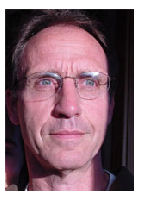 At the age of 29, artist Jerry Wennstrom destroyed all of his work, gave away all of his possessions, and set about living a deliberately simple and profoundly spiritual life. He practiced celibacy for 15 years until choosing to marry his life partner, singer Marilyn Strong. He is the author of The Inspired Heart: An Artist's Journey of Transformation. He has published over 50 essays and interviews, and his life's work has been the subject of Holy Personal by Laura Chester. In 2001, Parabola produced a documentary film called In the Hands of Alchemy: The Art and Life of Jerry Wennstrom. Sentient Publications is distributing a new 3-feature DVD, which includes In the Hands of Alchemy, the new film Studio Dialogue, and The Life and Works of Jerry Wennstrom (1979). At the age of 29, artist Jerry Wennstrom destroyed all of his work, gave away all of his possessions, and set about living a deliberately simple and profoundly spiritual life. He practiced celibacy for 15 years until choosing to marry his life partner, singer Marilyn Strong. He is the author of The Inspired Heart: An Artist's Journey of Transformation. He has published over 50 essays and interviews, and his life's work has been the subject of Holy Personal by Laura Chester. In 2001, Parabola produced a documentary film called In the Hands of Alchemy: The Art and Life of Jerry Wennstrom. Sentient Publications is distributing a new 3-feature DVD, which includes In the Hands of Alchemy, the new film Studio Dialogue, and The Life and Works of Jerry Wennstrom (1979).
To read more of Jerry Wennstrom
and view his paintings and sculpture please visit his website
handsofalchemy.com
Watch an exerpt of the video, Hands of Alchemy on YouTube
Return to Mythic Passages Menu
Subscribe to the Mythic Passages e-magazine
|
